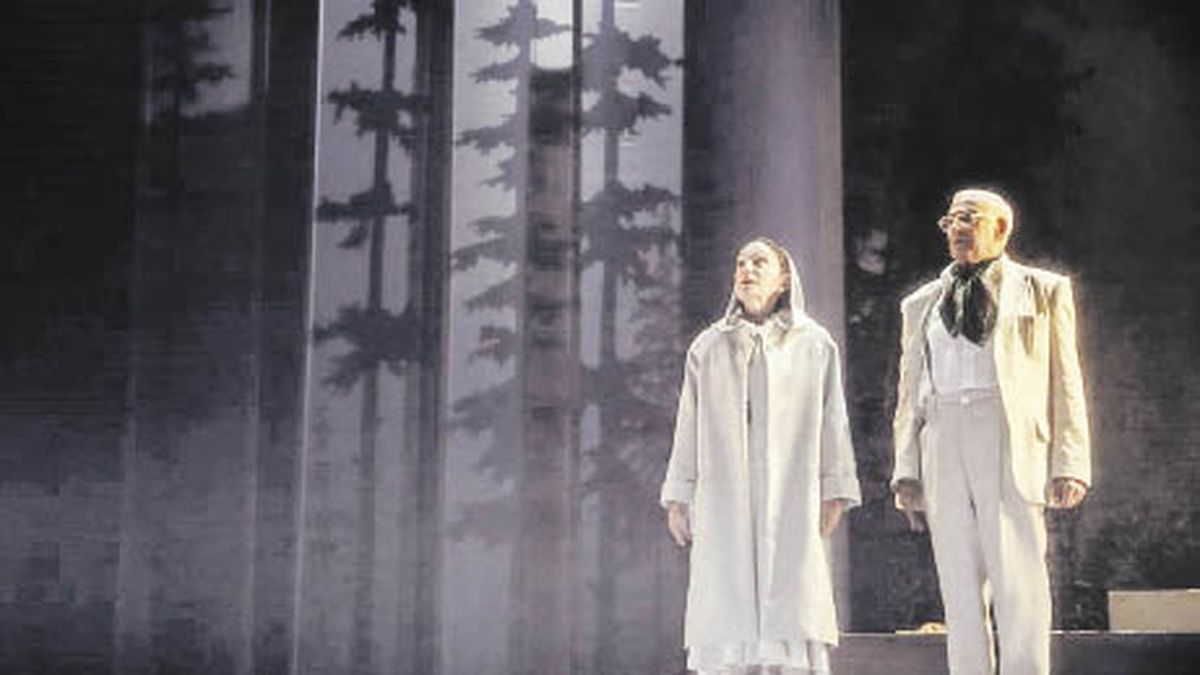But let’s go to his plot: Ibsen he called this, as already said, his last work (1899), “Dramatic Epilogue in Three Acts”. The characters are the famous sculptor Rubek, his wife Maia, who share a boring summer season in their resort near the fjords; a mysterious woman, Irene, apparently somewhat lost, who is followed like a shadow by a sister of charity, and a bear hunter, Ulfheim, who – at first glance – would be one step below the Yeti on the zoological scale. However, according to him, his methods for working sinew and blood from dead bears do not differ much from Rubek’s with marble.
The tedium that eats away at the Rubek couple soon gives way to first attraction, and immediate excitement, between the hunter and Maia, while the bond between the artist and the enigmatic woman (which Maia herself anticipates), is soon confirmed. : In her youth, Irene was a model for Rubek: but not just any model, but the woman who gave him much more than her nudity so that he could expose her to the entire world: the woman who gave him her soul, and then remained empty. Dead. The sculpture, which is rightly called the “Resurrection”, is considered by her as her son. A son he no longer possesses, who was alienated from him as if he had been ripped from his womb and disfigured, because Rubek, little by little, transformed his “masterpiece” (his own, not theirs), into another thing.
One of the most lucid critical remarks that Joyce makes of this work (in which she does not fail to notice its pre-avant-garde character, its announcement of the dramaturgies of the 20th century and, consequently, its affinity with nihilistic philosophies) is that the characters say one thing while the drama seems to take place elsewhere. As if what is being talked about is never being talked about (unlike the more forceful and less ambiguous Ibsen of his most popular works). Except, of course, that by the time you speak your mind, it’s already too late. “When we, the dead, wake up”, says Irene to Rubek, when he proposes to start over. “And what will we see then?” the artist wants to know. “That we have never lived.”
Ibsen lived to be 77 years old, 7 more than when he published this work, but he never wanted to write another one again (despite his rigorous routine of a biannual premiere). Some of his biographers say that it is the work with the greatest autobiographical components. In fact, like Rubek, he was returning from four years abroad, and found his homeland very disappointing. Others go further: what he no longer tolerated was the new century.
Horacio Peña composes an exceptional leading role, and the rest of the cast also has notable conditions such as Maia (Verónica Pelaccini), Irene (Claudia Cantero) and Ulfheim (José Mehrez). Particularly noteworthy is the staging by Jorge Ferrari and the lighting by Gonzalo Córdova (they have worked with tulles that expressly attenuate the sharpness, as in some operas or ballets), whose final effect coincides with the shocking final cry of the deaconess, or sister of charity (Andrea Jaet).
“When we the dead awake”, by H. Ibsen. Dir.: R. Szuchmacher. Int.: H. Peña, V. Pelaccini, C. Cantero. (Cervantes National Theater).
Source: Ambito
David William is a talented author who has made a name for himself in the world of writing. He is a professional author who writes on a wide range of topics, from general interest to opinion news. David is currently working as a writer at 24 hours worlds where he brings his unique perspective and in-depth research to his articles, making them both informative and engaging.




